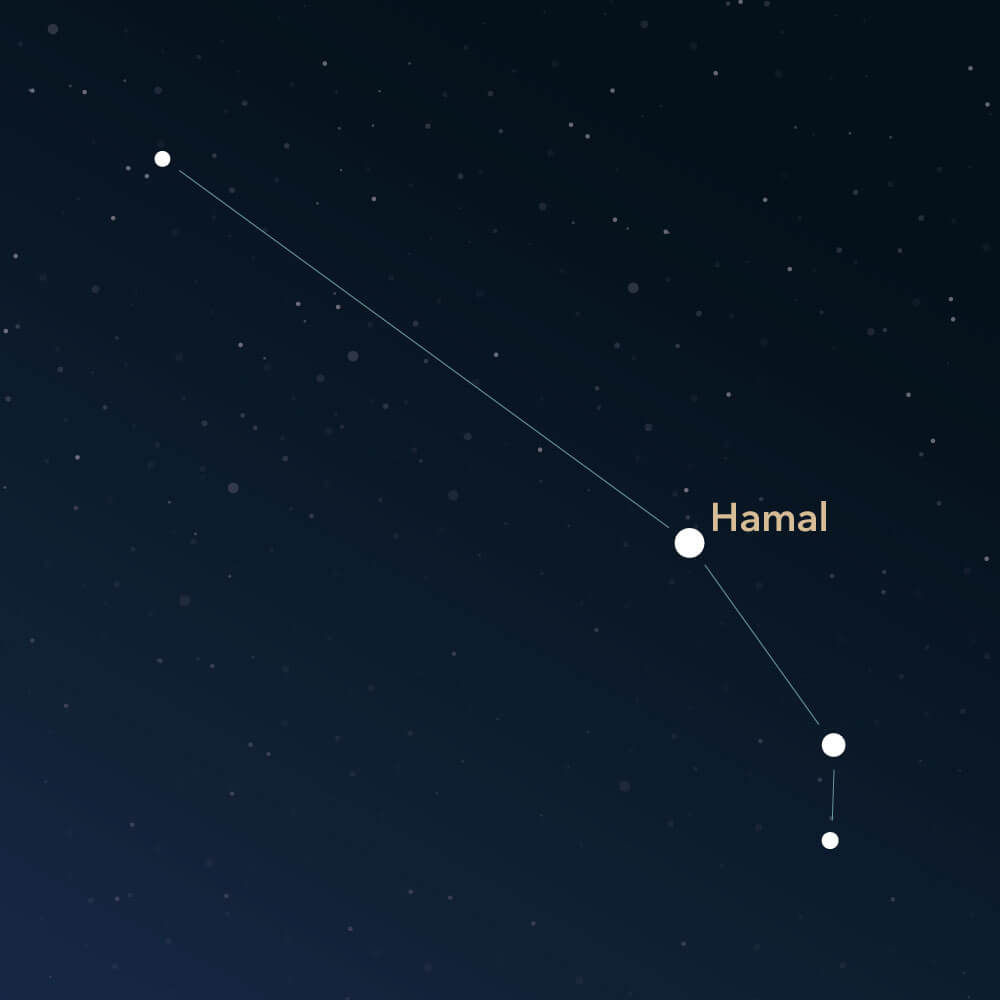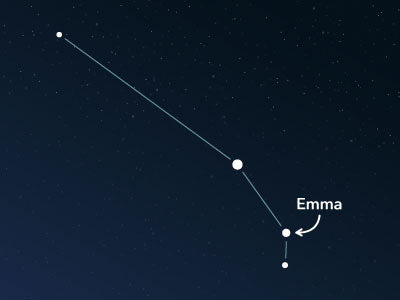The constellation Aries
Caractéristiques
- Nom latin
- Aries
- Hémisphère
- Hémisphère nord
- Visibilité
- October - February
- Région
- 441 deg²
- Étoile la plus brillante
- Hamal (HIP number 9884)
- Spécialités
- Galaxies

The Aries, Latin for Ram, was already known in Babylon, Persia, and ancient Egypt. It finally came to Rome through Greece, where it received the Latin name Aries. It is a small constellation with a distinctive structure that makes it easily recognizable. Additionally, it is the origin of the astrological zodiac sign Aries, which today is given great importance.
Hemisphere, visibility, and area
Aries lies in the northern night sky and is visible from the entire northern hemisphere. South of the equator, it is visible up to the 59th parallel, which means it cannot be seen from Antarctica. The best time to observe the constellation in the night sky is from October to February.
The constellation is located on the ecliptic, the apparent path of the sun and other planets, such as the moon. This means that the sun passes through the constellation at the same time every year. In the present day, this period is from April 19 to May 14. During this time, it is not visible as it rises and sets with the sun.
From an astrological perspective, the sun passes through the sign of Aries from March 21 to April 20. However, this period was determined thousands of years ago and no longer applies today. Due to the precession of the earth, the sun passes through the constellation around a month later.
With an area of approximately 441 square degrees, Aries is a relatively small constellation. In comparison to all other 88 constellations, it ranks 39th in size.
The stars in Aries are not particularly conspicuous, with only two stars being brighter than 3 magnitudes. The most shining star in Aries is Hamal (Latin: α Arietis, Alpha Arietis), with an apparent magnitude of roughly 2.
To find the constellation in the night sky, it is helpful to orient oneself to the surrounding constellations. Aries is embedded between five other constellations in the night sky. To the west and east on the ecliptic are the constellations Taurus and Pisces, respectively. To the north and south are the constellations Triangulum, Cetus, and Perseus.
Specialties in the constellation
In the constellation Aries, there are two galaxies. One of them is NGC 680, which is located approximately 136 million light-years away from the Milky Way. Its diameter is about 70,000 light-years.
The other galaxy is NGC 772. It is a spiral galaxy located about 114 million light-years away from the Milky Way. Its diameter measures approximately 240,000 light-years.
History and mythology
The earliest recognizable reference to the constellation Aries as an independent constellation was found as early as 1350-1000 BC. The sign of Aries has been discovered on several stones.
In ancient Egyptian astronomy, the ram was associated with the god Amon-Ra, depicted as a man with a ram's head. This symbol represented fertility and creativity. As it was mainly visible in the springtime, it was often identified as an indicator of the annual rebirth of the sun. During this time, priests were particularly concerned with honoring their statue of the god Amon-Ra.
According to Greek mythology, King Athamas chose his eldest son Phrixos as his successor. However, the current wife of the king and stepmother of Phrixos wanted her own son to take his place. She resorted to a trick: she caused the seed for the next year to rot, thereby causing a crop failure. A manipulated oracle told the king that another crop failure could only be avoided if he sacrificed his son Phrixos.
Unhappily, he wanted to follow the oracle's instructions, but at the moment of the execution, a ram with golden fleece sprang out and saved Phrixos. Upon the ram's request to be sacrificed instead of the king's son, famine was averted.
In gratitude for the ram's heroic act, it was placed in the sky.
PubliéLire d'autres articles intéressants

An overview of all 88 constellations
Learn more about all 88 constellations and read interesting information about the mythology, visibility, and features.

Application Planétarium
Découvrez le ciel nocturne avec notre application de planétarium !
Disponible pour iOS et Android.

Nommez une étoile dans la constellation Ram
Name a star in a constellation and create something that lasts for eternity.